Tsuga canadensis
Dominant and prevalent tree of the state living up to 800 yrs
Tsuga canadensis eastern hemlock
This is one of the major trees in the eastern deciduous forests of the United States (along with sugar maple, American beech and formerly American chestnut). It is a tall, pyramid-shaped tree with slender and sometimes drooping branches. It is more likely to have a rounded than a pointed crown. The twigs and branches are more flexible than those of spruces or firs and tend to "ride with the wind". It can grow to a height of 140 feet, but in forest environments is often smaller. Its native range is around the Great Lakes, New England, Northern Atlantic Coast and south to Alabama in the mountains.
The needle leaves are flat - ½ to 1 inch long and 1⁄16 inch wide. These needles have pointed bases with short stalks and grow in two rows. When the needles drop, the bases remain attached to the twigs making them rough. This distinguishes them from the firs that have smooth twigs. They are dark green above and light green below with two silvery stripes. The pollen cones are light yellow while the female or seed cones are pinkish-green and mature to brown with a total length of only ½ to 1 inch long. The seeds have wings twice as long as the seed.
The hemlock is sometimes used as an ornamental and can be trimmed to shape. It is also a source of lumber and pitch, though the wood is tough and knotty. The bark is used for tanning. It makes a poor Christmas tree because the leaves quickly dry up and fall off after it is cut. It is also called the Canadian hemlock. The similar Carolina hemlock is found in the southern mountains from Virginia to Georgia. It is the state tree of Pennsylvania.
An invasive insect called the hemlock woolly adelgid is killing trees from the Carolinas to Maine and is threatening the species. These aphid-like insects are hard to see but leave white wooly masses on the underside of hemlock twigs. Scientists are working on a fungus treatment that may control the insect and some states have released insect predators to help control the adelgid.
Habitat & Range
Grows in forests; forest and wetland edges in wet soils; shade tolerant & prefers cool moist sites.
Present throughout the state.
Range: The Great Lakes, New England, Northern Atlantic Coast and south to Alabama in the mountains.
| EMP: | FACU |
|---|---|
| NCNE: | FACU |
Phenology
Flowers (produces pollen) in April.
Characteristics
Tree pyramid-shaped with irregular crown; spreading branches horizontal with drooping tips
Needles occur singly (½ -1 in. long), soft, flat, tapering at the end & appearing 2-ranked on twigs; dark green & glossy above, light green with 2 silvery lines below
Twigs slender, tough, yellowish brown; buds egg-shaped, reddish-brown
Bark gray brown to red brown; flaky on young trees , thicker and grooved on older trees
Seed Cones egg-shaped, hanging singly from tips of twigs, from ¾ - 1 inch long; 2 small, winged seed under each scale
Pollen Cones light yellow, almost round, 1⁄2 to 1⁄3 inch long; single in the needle axils of 1-year-old twigs
Height 40 to 60 feet avg. height, can grow up to 140 feet
Fall Color evergreen
Age 150-200 yrs; some can live up to 800 yrs
Identification Tips
Needles are single and soft
Plant Codes
S-rank: S5 (Secure)
G-rank: G4 (Apparently Secure)
Ecology
Game birds and songbirds feed on the seeds and also use this tree as shelter. Deer browse it heavily in winter.
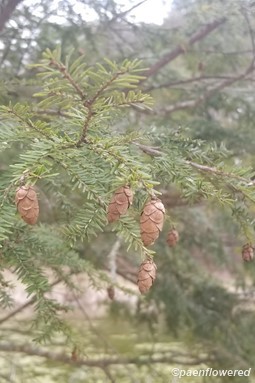
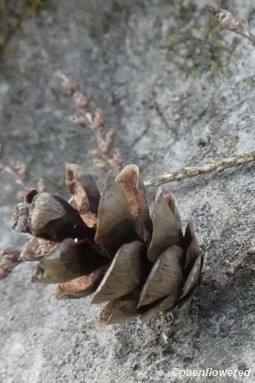





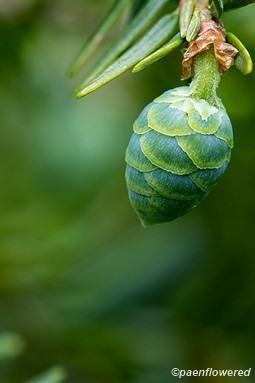
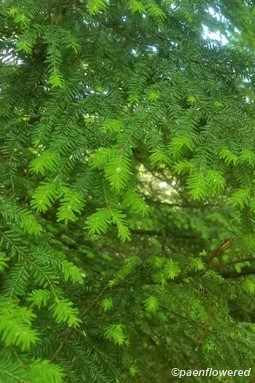
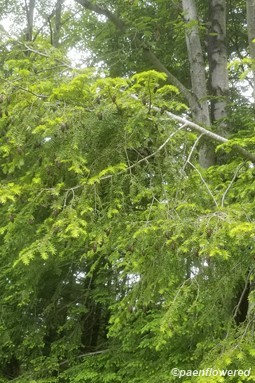

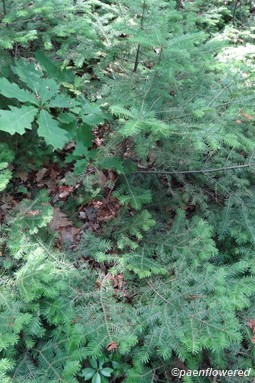
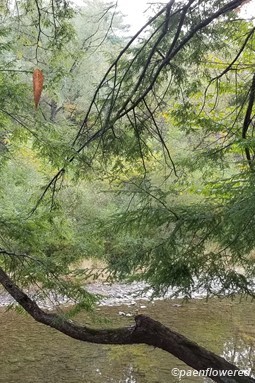

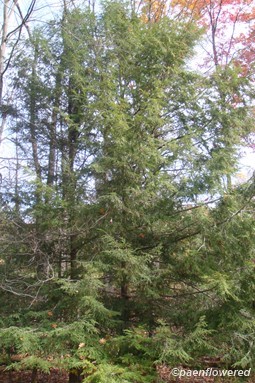
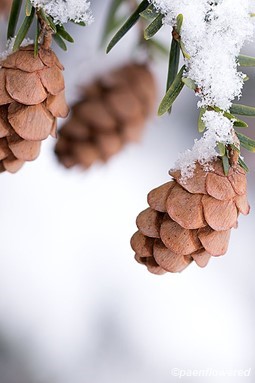
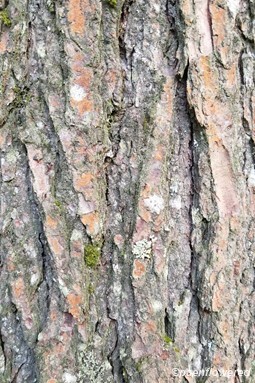

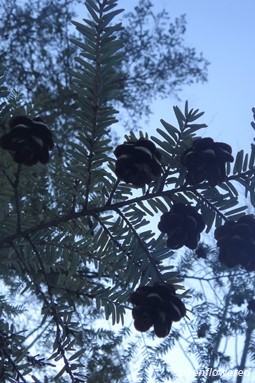

Comments
Have you spotted this plant in your area? We'd love to hear about your experience! Share your comments or questions about the plant below. Comments are moderated before posting.